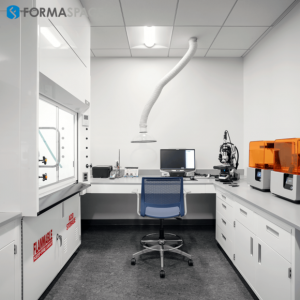New Advances in Veterinary Vaccine Development and Disease Control
Find out about the exciting new research and development advances in the field of veterinary science and disease control.
Covid-19 Zoonotic And Reverse Zoonotic Infections
Researchers are still trying to determine the origin of SARS-CoV-2, the virus that caused the Covid-19 pandemic. Was it a zoonotic disease that originated in bats, spreading to other species (such as pangolins) and eventually humans – or was it the result of an outbreak in a research lab in China?
This controversy remains unsolved.
Fortunately for most companion pets, e.g. dogs and cats, the risk of interspecies Covid infections is minimal in dogs or non-existent in cats.
However, veterinary researchers have been able to identify species populations that are particularly vulnerable to Covid infection.
For example, minks are very susceptible to the virus. Not only can minks become infected with Covid from humans (reverse zoonotic infection), they can harbor the virus (creating a viral reservoir) and create new variants that have to potential to re-infect humans. For this reason, there was widespread culling at European mink farms at the outset of the virus outbreak.
More recently, researchers at the Virology Laboratory at the Cornell University College of Veterinary Medicine’s (CVM) Animal Health Diagnostic Center found that wild White Tail Deer (WTD) in New York state harbor significant reservoirs of mutated Covid viruses. These include three of the major Covid Variants of Concern (VOC) that previously circulated through human populations, including variants Alpha, Delta, and Gamma.
As deer are the most common large mammal in North America, there is ongoing concern these viral reserves of Covid variants in deer populations could somehow remerge as a future threat to human health.
The Current Outbreak Of Highly Pathogenic Avian Influenza (HPAI) H5N1 Is A Risk To Humans And Animals
Viral researchers have also long considered the risk of a mutated version of Avian flu to be a major health threat to human health. After all, the Spanish flu outbreak in 1918 is thought to have stemmed from the H1N1 strain of the Avian influenza virus, killing an estimated 500 million people worldwide. To date, one person has come down with Avian flu.
This threat remains top of mind for a couple of reasons.
First of all, we are seeing a worldwide outbreak of Highly Pathogenic Avian Influenza (HPAI) H5N1. In North America, the USDA estimates that nearly 60 million birds have become infected, leading many commercial poultry farms to cull their flocks.
Second, the scope of this outbreak is larger than previous North American Avian flu outbreaks, affecting about 40 species of birds. Researchers at Tufts University’s Cummings School of Veterinary Medicine have confirmed that wild gulls, geese, and ducks are the major vectors spreading the virus.
Third, veterinarian researchers have discovered that the current Avian flu is infecting new species, including marine life (pelicans, sea lions, and dolphins) and mammals (minks, raccoons, foxes, skunks, and grizzly bears).
These risks come at a time when the high price of eggs in the grocery store is encouraging more Americans to consider starting a backyard flock of chickens.
(Home chicken flocks need to be protected inside wire enclosures to isolate them from exposure to wild gulls, geese, and ducks, to reduce the chance of disease exposure through contaminated water, feed, or feces.)
What About Vaccines Against The Avian Flu?
There is widespread concern that we are not as prepared for an epidemic of avian flu among humans as we could be.
Back in 2007, the FDA began stockpiling human Avian flu vaccines in anticipation of a major outbreak, starting with a non-adjuvanted, egg-based H5N1 vaccine from Sanofi Pasteur. This was followed by the approval of an adjuvanted vaccine, the Influenza A (H5N1) Virus Monovalent Vaccine, produced by ID Biomedical Corporation of Quebec.
In 2022, the FDA approved Audenz, which is the first adjuvanted, cell-based influenza vaccine. It features the oil-in-water emulsion-based MF59 adjuvant, which helps stimulate an immune response, especially in the young, the elderly, and the immunocompromised.
However, we are not in the clear. There are reportedly not enough doses of Avian flu vaccine to go around, and when an outbreak hits, we will not know in advance how effective these vaccines will be against the specific virus mutation that could kick off a major human bird flu pandemic.
What About Controlling Avian Flu At The Source With Vaccines Designed For Birds?
Surprisingly, there ARE vaccines available for vaccinating poultry, and new vaccines are currently under development at research facilities such as the University of Minnesota.
Private investments by pharma companies such as Merck are also funding new developments, such as a novel vaccination delivery system developed by TARGA.
But why aren’t all commercial flocks being vaccinated now?
The answers given by the industry are pretty confounding, to be honest.
While European producers are turning to widespread vaccination, American poultry producers have generally resisted, pointing to increased cost as well as the “masking effect” of vaccines, which would make it harder to pinpoint outbreaks in individual flocks.
Time will tell if this approach will prove to be the right one or not.
Rapid Response Swine Vaccine Platforms
There are new advances in developing vaccines for swine (pigs and hogs).
In 2015, the USDA’s Center for Veterinary Biologics approved a new protocol that paves the way for vaccine developers to create “veterinary vaccine platforms.”
These are essentially pre-approved manufacturing processes, allowing vaccine developers to respond quickly to individual disease outbreaks by producing custom vaccines targeting a specific outbreak.
The South Dakota-based vaccine producer Medgene Labs is one of the first to receive approval for their veterinary vaccine platform. The process works like this: the company collects outbreak samples to identify a disease vector and then builds a custom protein that mimics the infection.
These protein constructs are used to create customized, non-replicating, and nonviable (killed) vaccines. According to the company, the creation of a custom vaccine can take between 2-3 days if they already have the correct protein in stock and between 10-12 weeks for a newly identified virus.
Researchers at Merck Animal Health have developed a similar system called the Sequivity Vaccine Platform. However, Merck uses mRNA-based technology (similar to the Pfizer and Moderna Covid vaccines for humans) to create new swine vaccines.
Merck says they can create custom vaccines for numerous swine diseases, including PCV2, PCV3, Rotavirus, Sapovirus, Influenza A Virus in Swine (IAV-S), and Porcine Epidemic Diarrhea (PED).
Read more...https://formaspace.com/articles/healthcare/new-advances-in-veterinary-science-and-disease-control/?utm_source=Einpresswire&utm_medium=content&utm_campaign=article-021523
Julia Solodovnikova
Formaspace
+1 800-251-1505
email us here
Visit us on social media:
Facebook
Twitter
LinkedIn
Legal Disclaimer:
EIN Presswire provides this news content "as is" without warranty of any kind. We do not accept any responsibility or liability for the accuracy, content, images, videos, licenses, completeness, legality, or reliability of the information contained in this article. If you have any complaints or copyright issues related to this article, kindly contact the author above.



